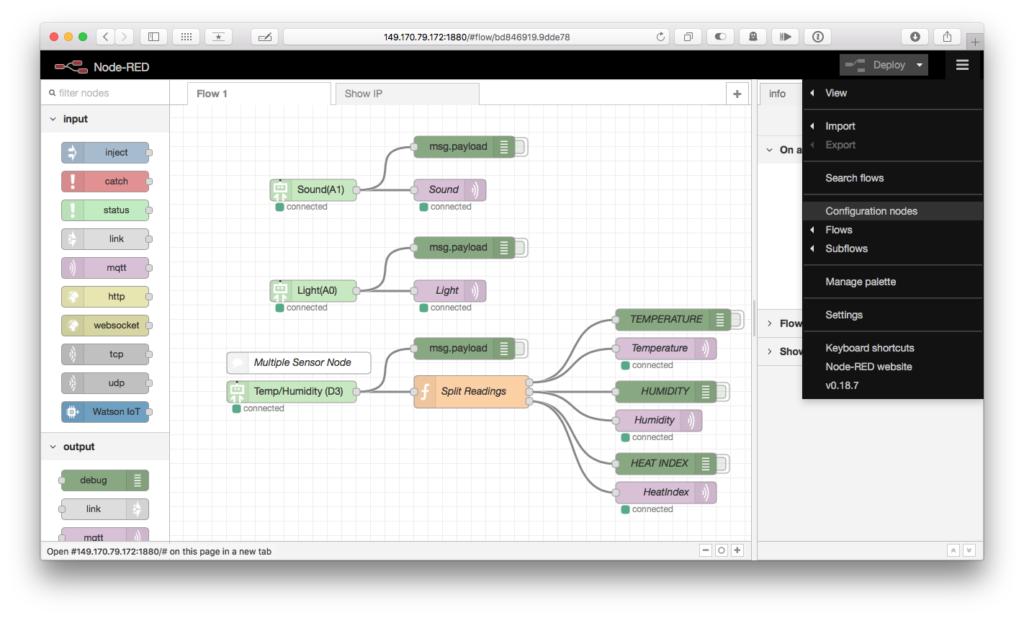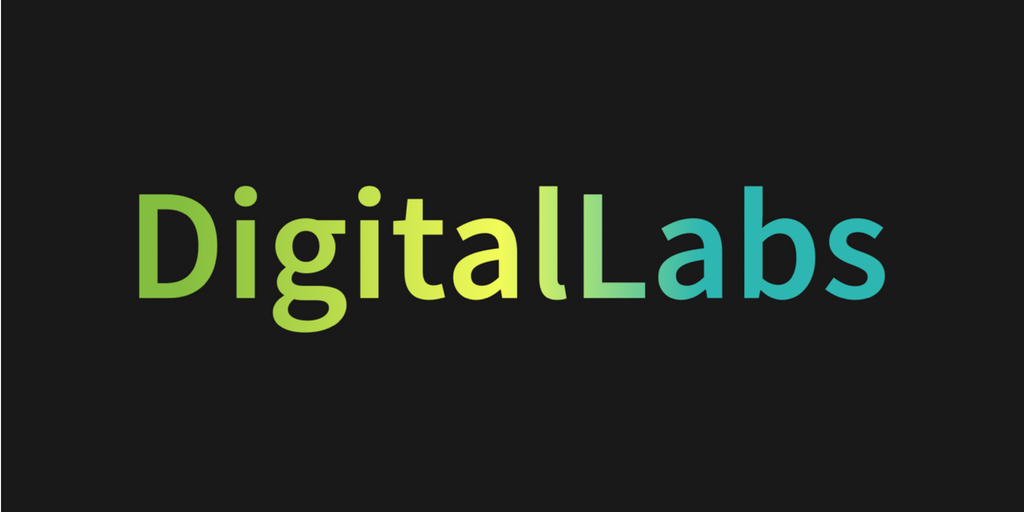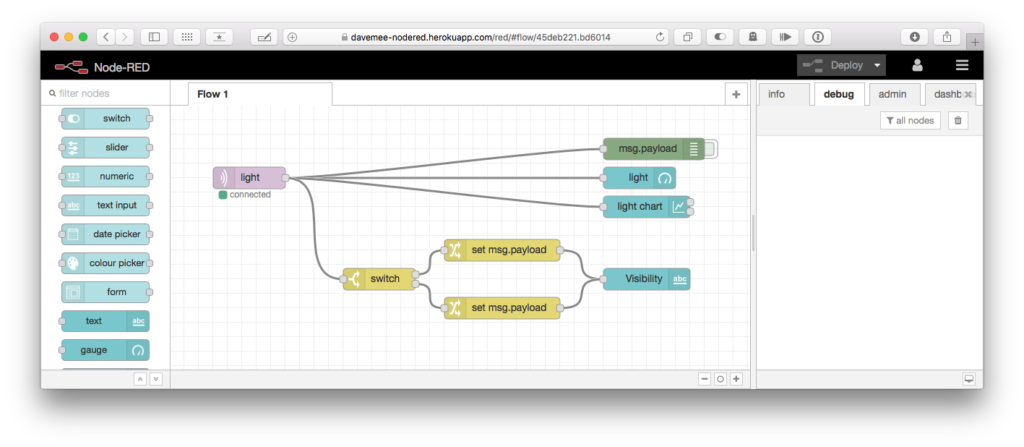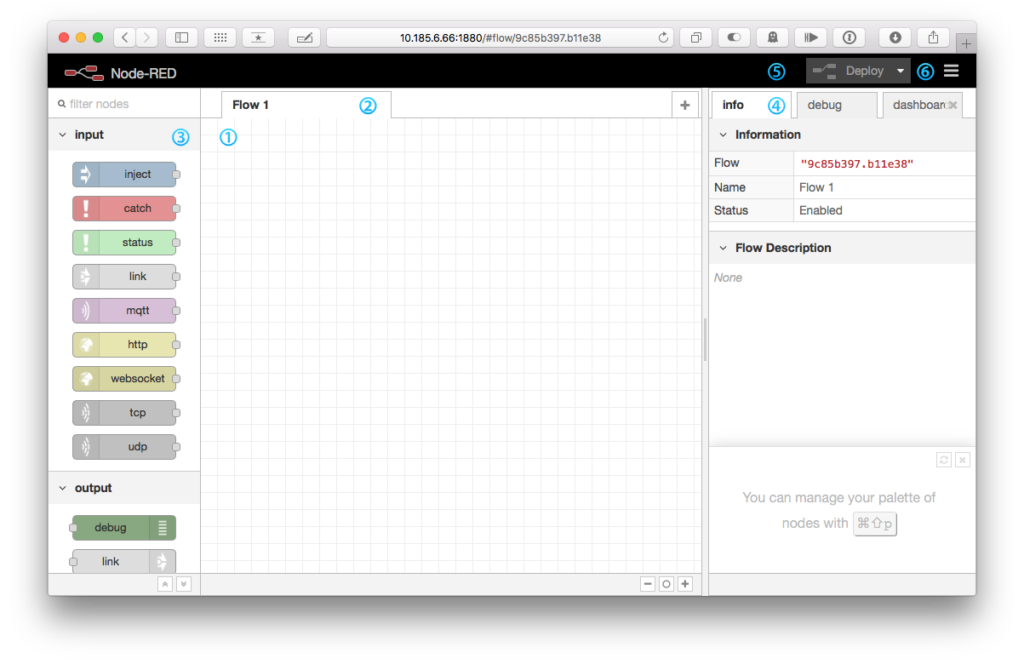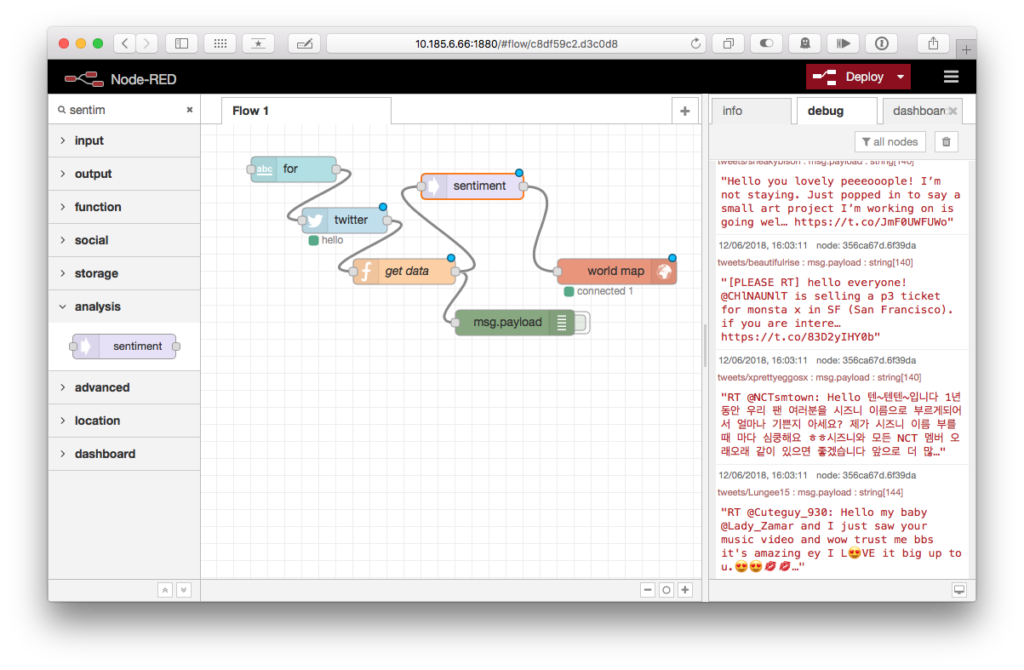Here’s a quick dashboard we put together with Node-red and the Grove Pi+ sensor kit. We built a little on our previous project to pull in more environmental data, but by using our Heroku platform (with its bundled CloudMQTT broker) we have a free, web-hosted dashboard we can access from anywhere.
This is part of our series on Node-red; If you’d like to see more, see our Technology for Non-technologists post, or our series of posts on Node-red and sensors. [Read more…] about Take a peek at the Quantified Digital Labs Environment!
